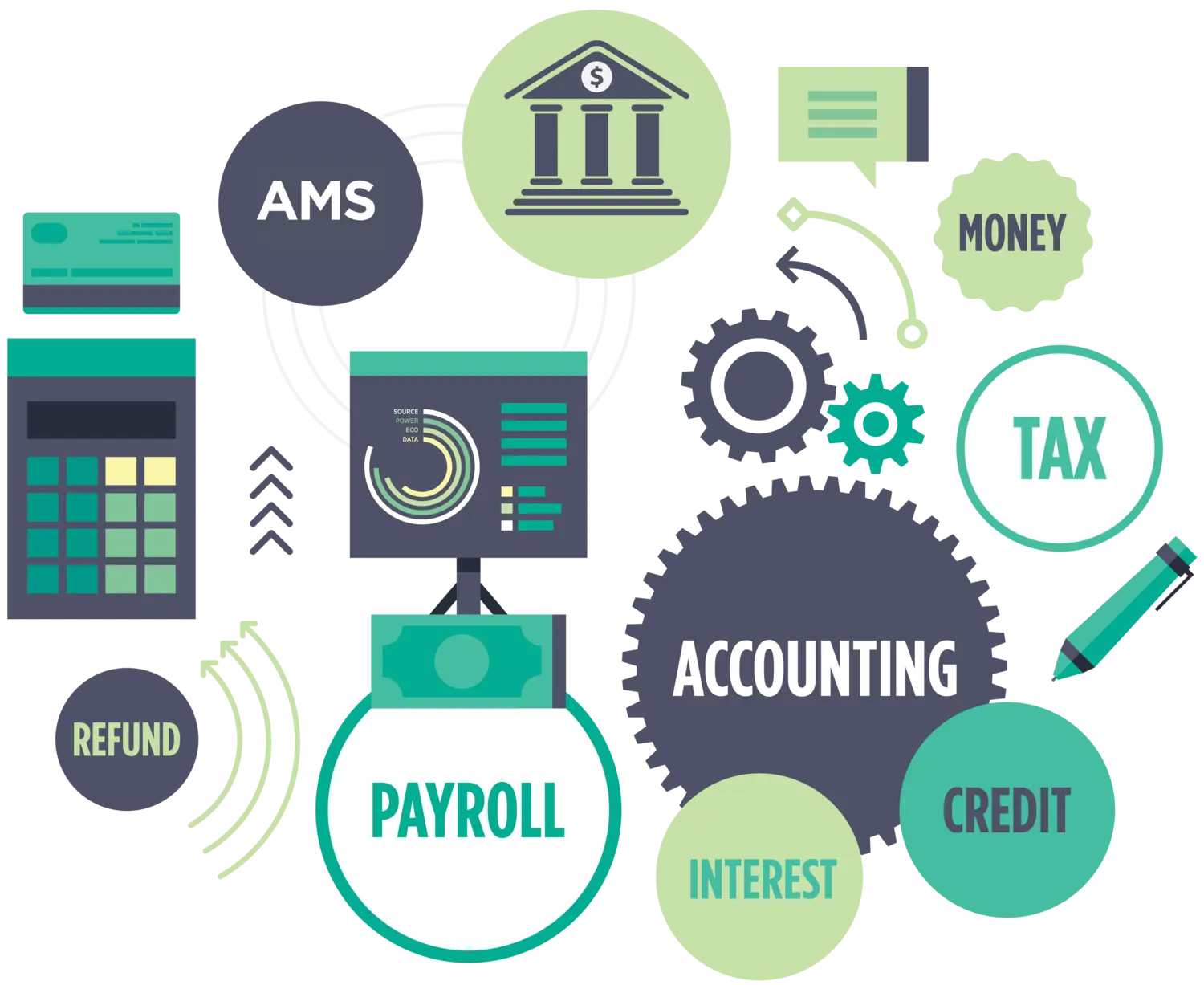
We Balance More Than Just Books(gstbookkeeper)
Accounting shouldn’t slow you down—it should power you up. At GSTBookkeeper, we turn messy ledgers into clear insights, manage your books with precision, and help you stay ahead on compliance and reporting. Whether you’re a small business, startup, or busy professional, our smart accounting keeps your finances organized, transparent, and growth-ready. You focus on the business—we’ll focus on the balance.
Smart Accounting, Built Around You
Maintenance of Books of Accounts On Monthly Basis.
Monthly Maintenance of Books of Accounts
Regularly maintaining books of accounts is crucial for any business, especially for compliance and informed decision-making in India. Here’s what it generally entails on a monthly basis:
Key Monthly Activities
Transaction Recording:
- Record all cash receipts and payments accurately and daily in the Cash Book.
- Update the Bank Book with all bank transactions, ensuring it’s reconciled with bank statements each month.
- Document non-cash transactions like credit sales, purchases, and depreciation in the Journal.
- Always ensure every entry is supported by proper documentation (invoices, receipts, vouchers).
Ledger Maintenance:
- Post all recorded transactions to their respective Ledger Accounts (e.g., individual accounts for sales, purchases, various expenses, assets, and liabilities). This helps in tracking the balance of each account.
GST Compliance (if applicable):
- Reconcile GSTR-2A with your purchase invoices to ensure all eligible input tax credit (ITC) is captured.
- Prepare and file monthly or quarterly GST returns (GSTR-1, GSTR-3B) by their due dates.
- Maintain detailed records of outward and inward supplies.
TDS/TCS & Payroll Compliance (if applicable):
- Verify and account for TDS (Tax Deducted at Source) on payments made and TCS (Tax Collected at Source) on certain sales. Ensure timely deposit to the government.
- Process employee salaries, accurately deducting and depositing statutory contributions like TDS on salaries, EPF, and ESI. Maintain proper payroll registers.
Financial Review & Reporting:
- Prepare a Trial Balance at the end of each month. This report lists all ledger balances and helps check the arithmetic accuracy of your double-entry system.
- Categorize and review all income and expenses for the month to understand financial performance.
Documentation & Filing:
- Organize and systematically file all supporting documents, both physical and electronic (e.g., invoices, receipts, bank statements). This is vital for audits and easy retrieval.
Benefits of Monthly Bookkeeping
- Accuracy: Ensures your financial records are precise and up-to-date.
- Compliance: Helps you stay compliant with various Indian tax laws and regulations.
- Decision-Making: Provides a clear financial picture, enabling better business decisions.
- Audit Readiness: Makes annual audits smoother and less time-consuming.
Internal Audit of Accounting System
Internal Audit of Accounting System: Quick Guide
An internal audit is essentially a financial health check. Its goal is to ensure your accounting system is accurate, efficient, and compliant.
What to Look For:
Controls:
- Separate Duties: Do different people handle authorizing, recording, and managing money/assets? This prevents errors and fraud.
- Approvals: Are all payments and financial commitments properly authorized?
- Security: Are physical assets (cash, inventory) and system access (software passwords) well-protected?
Cash & Bank:
- Confirm daily cash handling and timely bank reconciliations.
- Check petty cash management.
Income & Expenses:
- Verify sales are recorded correctly and invoices are sequential.
- Ensure purchases are authorized and matched with invoices before payment.
- Confirm all expenses are legitimate and properly documented.
Inventory & Assets (if applicable):
- Reconcile physical stock with records regularly.
- Keep your asset register accurate, including depreciation.
Tax & Payroll Compliance:
- Verify GST, TDS/TCS filings are accurate and on time.
- Check payroll calculations and timely deposit of statutory deductions (EPF, ESI).
Reporting:
- Ensure internal financial reports are accurate and timely.
- Confirm all key accounts (bank, debtors, creditors) are regularly reconciled.
Financial Statement Preparation MIS Reporting : Preparation of Monthly / Quarterly / Half Yearly MIS Reports As Per Needs of The Organization
Financial Statement MIS Reporting: Quick Guide
MIS (Management Information System) Reports transform raw financial data into actionable insights for decision-making. They go beyond standard financial statements to meet specific organizational needs.
Key Components & Activities
Understand Needs:
- Identify KPIs (Key Performance Indicators): What metrics matter most to your management (e.g., profit margins by product/service, project profitability, cash flow trends, budget variances, sales growth)?
- Reporting Frequency: Clarify if reports are needed monthly, quarterly, or half-yearly.
Data Collection & Accuracy:
- Ensure all financial transactions (sales, purchases, expenses, banking) are accurately recorded and reconciled up to the reporting period.
- Verify data from ledgers (e.g., Debtors, Creditors), inventory, and fixed asset registers.
Core Financials as Base:
- Use the reconciled Profit & Loss Statement and Balance Sheet as the foundation.
- Extract figures for key line items relevant to your KPIs.
Customization & Analysis:
- Segmented Reporting: Break down financials by project, department, product line, or geographical area (e.g., specific site performance).
- Variance Analysis: Compare actual performance against budget or previous periods (e.g., month-on-month, quarter-on-quarter). Highlight significant deviations.
- Ratio Analysis: Calculate key financial ratios relevant to your industry and organizational goals (e.g., liquidity, profitability, solvency ratios).
- Cash Flow Insights: Provide a clear picture of cash inflows and outflows, often more detailed than a standard cash flow statement.
Report Preparation:
- Format: Design clear, easy-to-read reports, often using tables, charts, and graphs for visual impact.
- Narrative: Include brief commentary explaining key trends, significant variances, and actionable insights. Avoid just presenting numbers.
- Timeliness: Deliver reports promptly after the period ends to ensure relevance.
Benefits of Effective MIS Reporting
- Informed Decisions: Provides management with timely and specific data for strategic and operational decisions.
- Performance Monitoring: Tracks progress against goals and budgets.
- Early Warning: Highlights potential issues or opportunities early.
- Accountability: Helps hold departments/managers accountable for their performance.
Inventory Management
Why It Matters
- Cost Savings: Avoids overstocking (storage costs, spoilage) and understocking (lost sales, production delays).
- Customer Satisfaction: Ensures products are available when customers want them.
- Efficiency: Streamlines operations, reduces waste, and improves cash flow.
Key Activities
Tracking & Monitoring: Knowing exactly what you have, where it is, and its movement (in/out).
- Perpetual vs. Periodic: Real-time tracking (perpetual) vs. occasional physical counts (periodic).
- Tools: Barcodes, RFID, inventory management software.
Forecasting Demand: Predicting future customer needs using historical data and trends to avoid stockouts or excess.
Ordering & Replenishment:
- Reorder Points: Setting triggers to order new stock when levels get low.
- Safety Stock: Maintaining a buffer for unexpected demand or supply issues.
- EOQ (Economic Order Quantity): Calculating the ideal order size to minimize costs.
Stock Optimization:
- ABC Analysis: Categorizing inventory by value (A-high, B-medium, C-low) to prioritize management efforts.
- FIFO (First-In, First-Out): Selling older stock first, crucial for perishables.
- Just-in-Time (JIT): Ordering or producing items only when needed to minimize holding costs.
Auditing & Accuracy:
- Physical Counts/Cycle Counting: Regularly verifying physical stock matches records.
- Shrinkage: Investigating discrepancies (loss, damage, theft).
